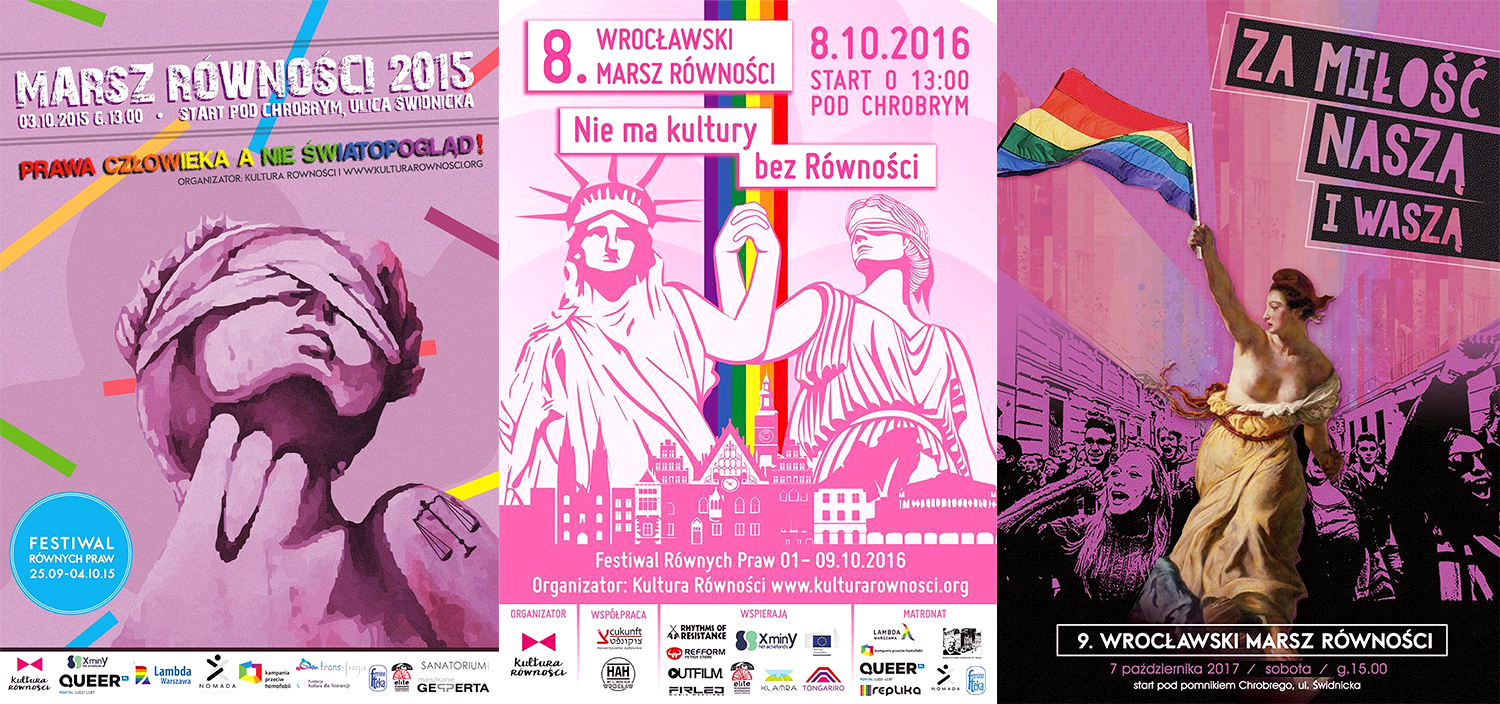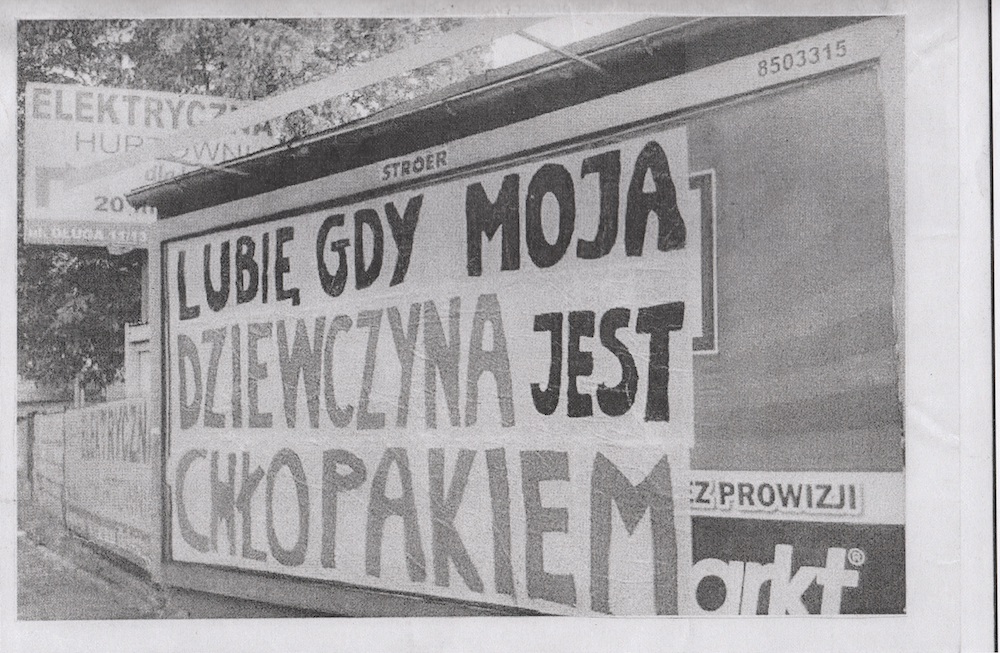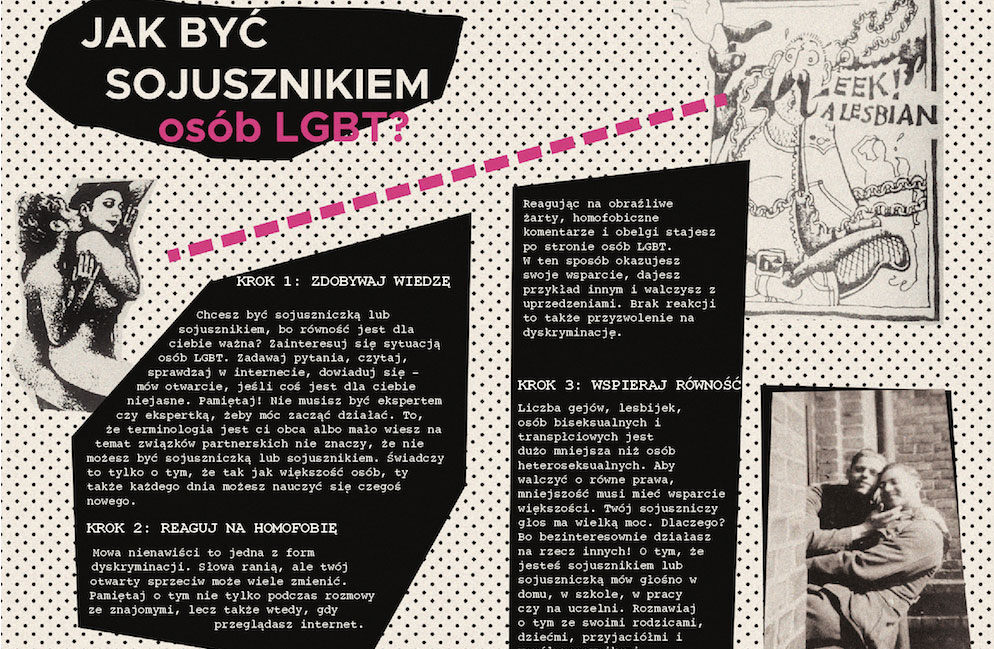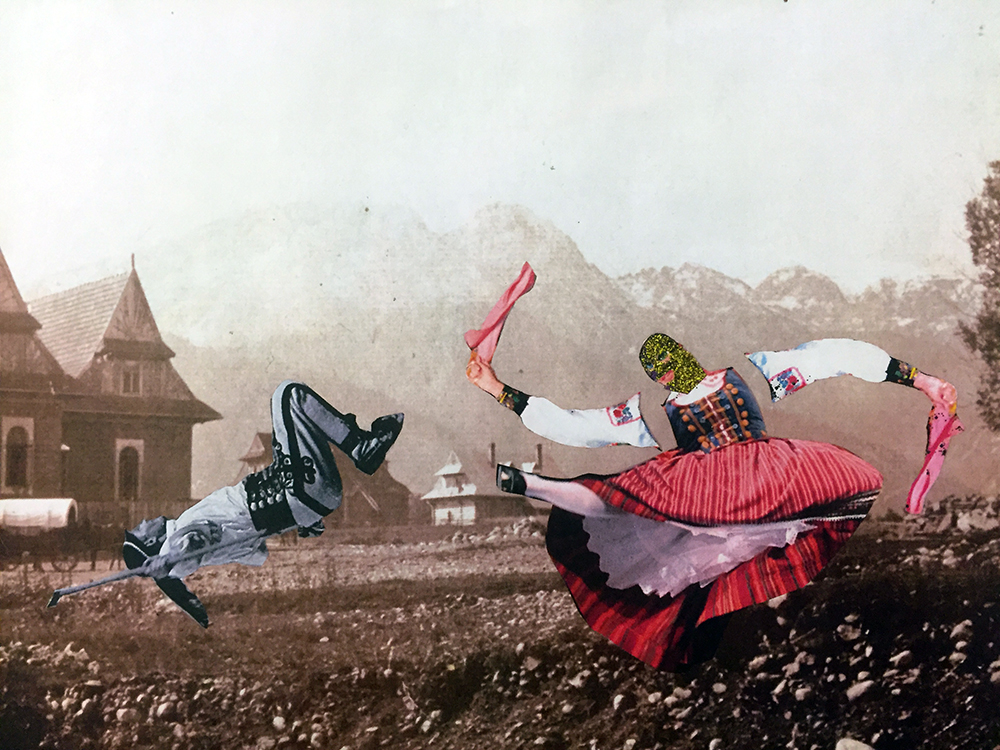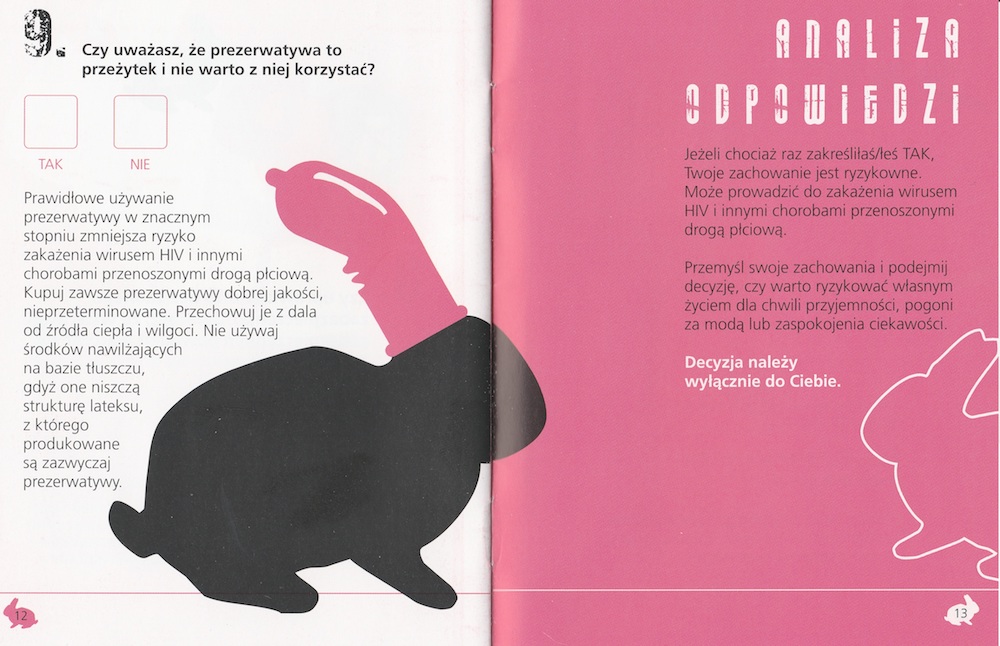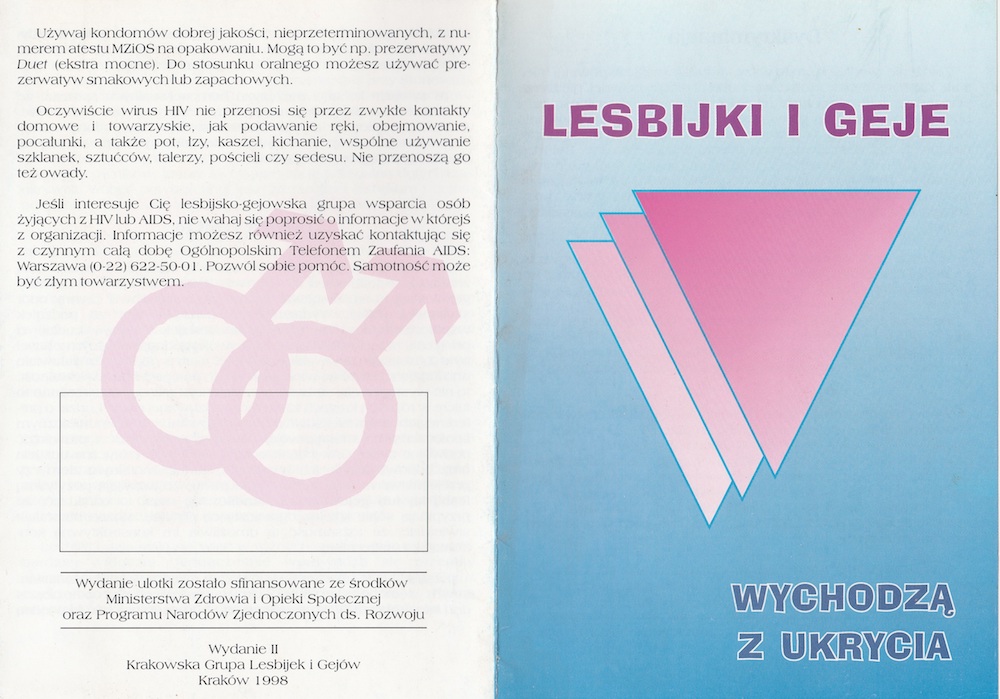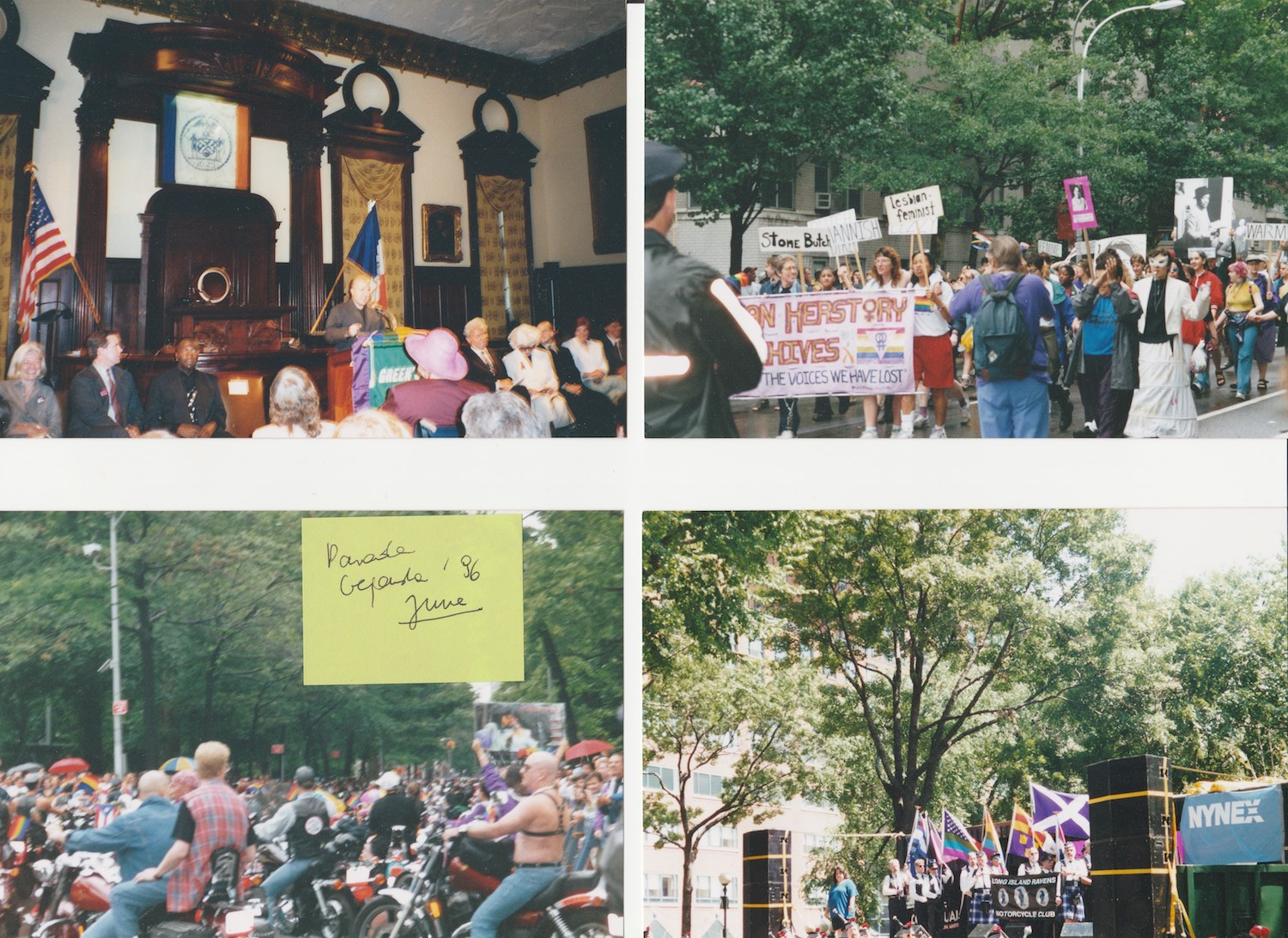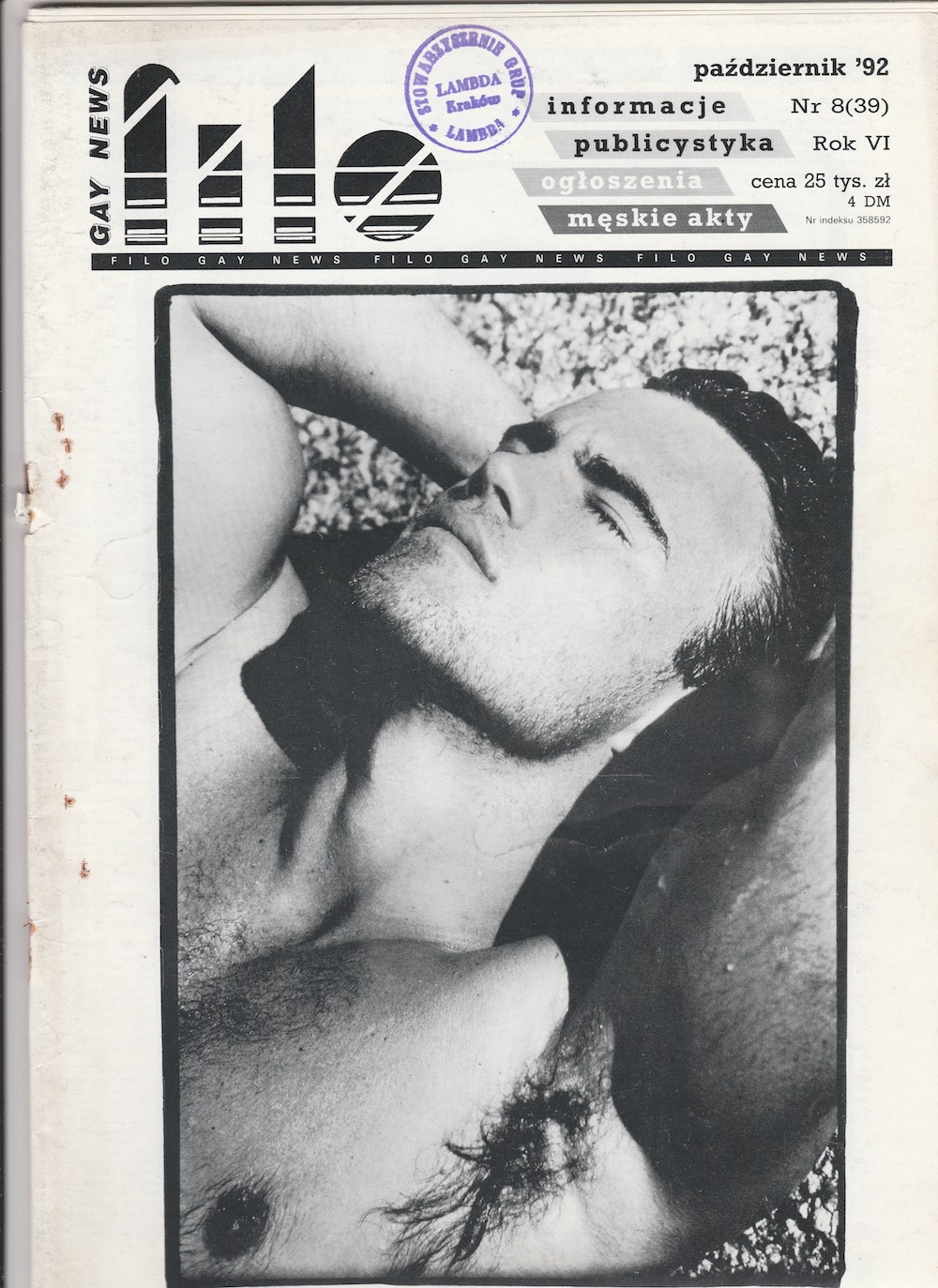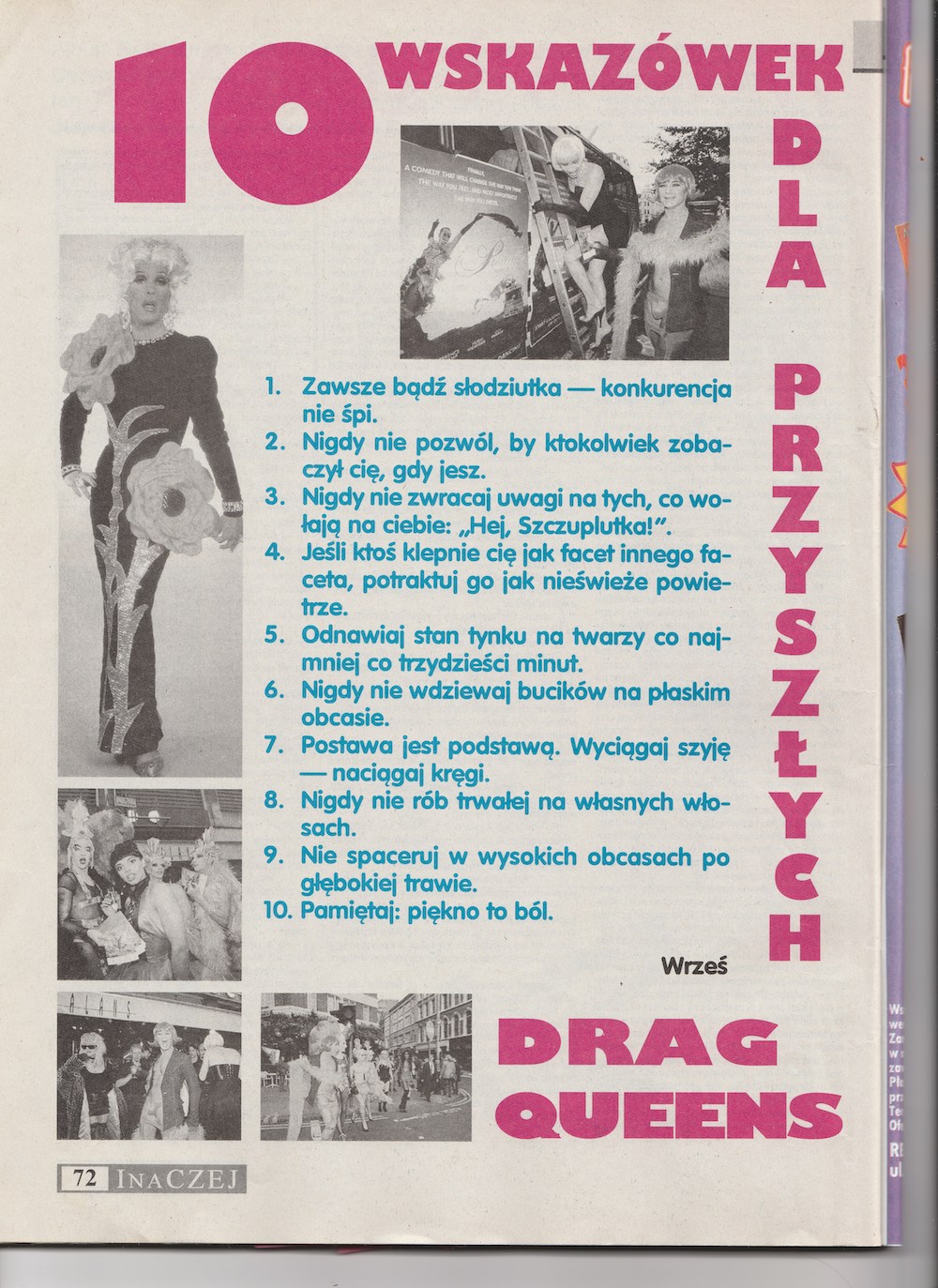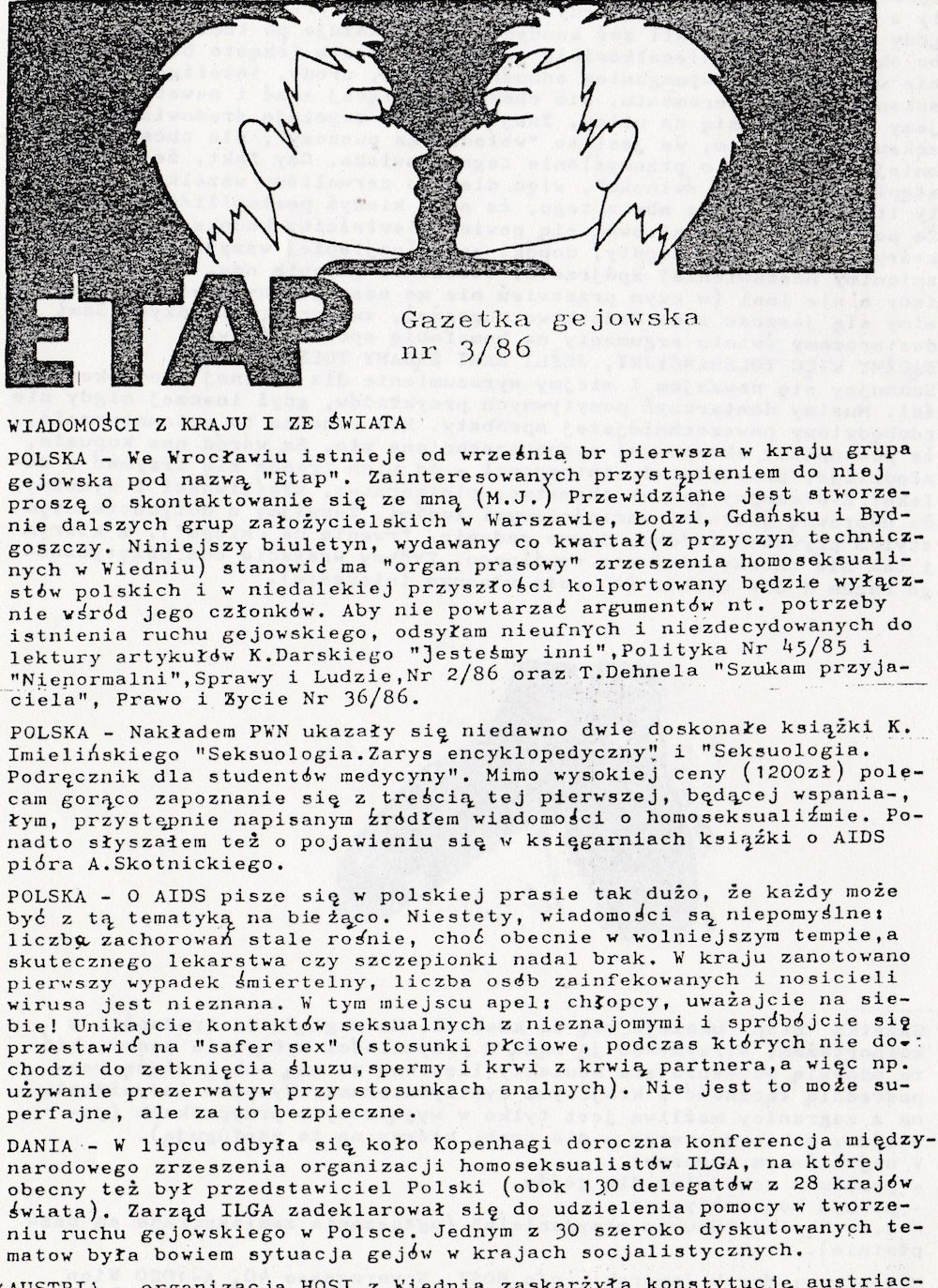Queer Poland: how the country’s first virtual LGBTQIA museum is defying conservative times
A first of its kind, the Polish LGBTQIA museum was launched earlier this year to promote the largely invisible history of queer communities in the country. It draws on an a rich archive of donated materials, including magazines, posters, photos, zines — now available for viewing anywhere in the world.
In early August, Netflix Polska (a partner of the Poznań Pride Week and March of Equality 2018) unveiled a colourful mural on the side of a tenement house, with the words “Orange Is Part Of The Rainbow” written next to the character Alex Vause on the background of the LGBT pride flag. Around one week later, the Polish Defence Minister, Mariusz Błaszczak, said of Poznań Pride: “Another parade of sodomites … If somebody tries to impose something that is not normal on us, then he will meet with resistance.” Netflix’s corporatism aside, this small exchange is perhaps an illustrative microcosm of the broader situation for LGBTQ+ communities in Poland. On the one hand, homosexuality has never been illegal in an independent Poland. Witold Gombrowicz’s novel Trans-Atlantyk — which in part deals with its author’s bisexuality — is taught on the Polish school curriculum; the world’s third transgender member of parliament Anna Grodzka sits in the Polish Sejm. On the other hand, the thread of Catholic conservatism is deeply entwined in Polish society, and occasionally manifests itself in more extreme forms. Openly homophobic political parties (e.g. the League of Polish Families) have been elected and served in government coalitions; the floral “Tęcza” rainbow installation across Warsaw’s Plac Zbawiciela was vandalised or burnt down five times in its three year history.
It is against this backdrop that the first Polish LGBTQIA virtual museum was launched in June 2018. The virtual museum was conceived by the historian and psychologist Agnieszka Wiciak. It aims to preserve the history of Polish non-heteronormative people, by documenting the stories of their constant existence alongside heteronormative people in Polish society. It draws on a variety of archive materials, including posters, photographs, flyers, leaflets, magazines, DIY zines and film clips. The museum exists online in a virtual form, and is therefore accessible across the world. Its inaugural exhibition is currently showcasing Posters of Polish LGBTQIA Organisations. New exhibitions will show every two to three months, with previous exhibitions being archived publicly in the virtual museum.
The virtual museum is a project of Foundation Q and Historical Club LGBTQIA FEM, two nonprofit organisations that Wiciak sits on the board of, along with fellow psychologist Justyna Bułdys and archivist Kamil Prykowski. Foundation Q is concerned with societal engagement, archival work and the direct support of Polish LGBTQ+ people, whereas Historical Club is solely focused on collecting, archiving and disseminating materials from LGBTQ+ communities both in Poland and around the world. “We started the Club because we’re observing now that these populist and right-wing parties [in Poland] are trying to redefine what sexuality and gender means,” Prykowski explains. “They’re trying to define it on their own terms, and we think that it’s quite important that there are local communities that own and are able to define what their sexuality is, what their gender is.” Wiciak and Prykowski began to reach out to people in the Polish queer communities, many of whom donated materials to them. Soon enough, Wiciak realised that they were building a large enough archive to merit a bigger project.
The team landed on the idea of a virtual museum, as they felt that it was the simplest way to reach their intended audience. The museum has a worldwide scope, but even for those living in Poland it is easier to access the museum online, rather than travel to a major Polish city. Ever conscious of the ways in which marginalised narratives are made invisible, they wanted to future-proof their collection. “If in 100 years, somebody maybe came and said ‘hey, there was nothing going on in terms of queer stuff’, then we can prove that we have the materials, everything will be in one place to prove that they’re not right,” Prykowski says. The idea to digitise the archive was also partly pragmatic. The majority of archive materials are made from paper, meaning that they are susceptible to damage and eventual degradation. Likewise, a physical museum entails renting space, buying display furniture and insuring exhibits. The sort of funds required for such a project are simply not available to Polish LGBTQ+ NGOs amid the country’s current political climate.
“We’re trying to get some funding from the national fund, but it’s really difficult to get,” Prykowski laments. “For example, we asked the national archives for a grant, but because of the scope of the NGO … As we said before, the whole discourse about history is in the hands of the right-wing parties, so everything that’s connected with LGBT, it’s not interesting, it’s not sponsored.” This is certainly consistent with the political discourse that emanates from Poland’s ruling Law and Justice (PiS) party. PiS co-founder Lech Kaczyński — the former President who died in the 2010 Smolensk plane crash and is often considered a national hero by the Polish right-wing — banned the 2004 and 2005 pride parades while he was the Mayor of Warsaw, on the grounds that he did not respect the rights of gay people to demonstrate and that he feared the parade would promote a ‘homosexual lifestyle’. Another PiS politician, Bartosz Kownacki, once referred to the “Tęcza” rainbow in Warsaw as a ‘faggot rainbow’. Without the support of government funding, the virtual museum has instead turned to other museums and cultural organisations — such as the POLIN Museum of the History of Polish Jews, the History Meeting House, and the KARTA Center — for workshops on oral history, archiving and how to protect their materials.
As a result, the team is amassing an impressive collection for future exhibitions. At present, they have 1200 pages to scan from different magazines and journals, 100 posters, 50 different kinds of photos and 300-400 leaflets, zines and other individual pieces of paper. They also have 20 oral history recordings, and are currently working their way through a list of Polish LGBTQ+ activists, with the goal of uploading audio and video recordings to the museum. “Right now, we have a list with around 100 surnames of different activists who can probably give us an interview about activism and LGBT communities in Poland,” says Prykowski. “We’re trying to reach the oldest activists first because of their age.”
The museum has a particular interest in activism, owing to the ways in which its suppression has had an historic influence on LGBTQ+ rights in Poland. During the communist era, the state police (milicja) launched a secret operation against the gay community. Operation Hyacinth ran from 1985-1987 and resulted in 11,000 people being registered by the authorities and subjected to harassment. The files created during Operation Hyacinth were transferred to the Institute of National Remembrance (IPN) during the transition to democracy in the 1990s. Controversially, the IPN have refused to destroy or even confirm if they hold the so-called ‘pink cards’, leading some to suggest that they are being kept to blackmail activists and prevent politicians from speaking in support of LGBTQ+ issues.
“In the 90s, there was still this fear that there would be an operation like this again, people might be reported again, might have the files again. So this was also the point that maybe stopped the energetic activism from going further,” Prykowski explains, while also emphasising the significant role that the Catholic church has played in blocking discussion of LGBTQ+ rights. The turning point appears to have been Poland’s first pride parade (Parada Równości) in 2001. “Since then, new parties have appeared on the political milieu and they’ve started speaking openly about LGBT issues — we have Nowoczesna, we have Razem. Since 2004, queer issues are appearing in the public debate. We have the first transgender person in the parliament, Anna Grodzka. We have also Robert Biedroń and Paweł Rabiej, the two politicians who have openly said that they are gay.”
Consequently, Prykowski believes that grassroots LGBTQ+ organisations are growing and becoming stronger, in spite of their present government’s hostility. Alongside mainstays Stonewall Poznań and Campaign Against Homophobia, a number of other groups are blossoming throughout the country, including Transfuzja (who assist trans people) and Miłość Nie Wyklucza (who advocate for legal civil partnerships), among others. “Actually, from the bottom-up, there’s a lot of stuff happening at this grassroots level, people self-organising,” Prykowski tells me. He compares the role of such groups to that of the Polish Positivists, who organised schools and education about Polish history for rural communities during the 19th century when Poland was partitioned and ceased to exist as an independent state. “Back then they used their history to empower people, because it was really focused on developing and building Polish identity. Now, it’s some sort of circle, because we’re also going back and giving identity and history, but for the LGBT community.”
Ultimately, Prykowski hopes that the virtual museum can play an educational and unifying role in the face of a divisive government. “We can observe nowadays that the Polish government is trying to create a new historical politics through how they define who the heroes are, and who are not. It creates a history with a lot of gaps. The government is trying to show that there is just one heteronormative Polish citizen. We are trying to show that actually, the LGBT community was always here, is here now and will be here in the future. Let’s show it and be visible. Let’s tell our story because our story also matters. It’s part of the story and history of this country, its society and citizens.”
Text: Richard Greenhill
Image: Polish LGBTQIA virtual museum
With special thanks to Karolina Ufa for her assistance with interviews and translations.
